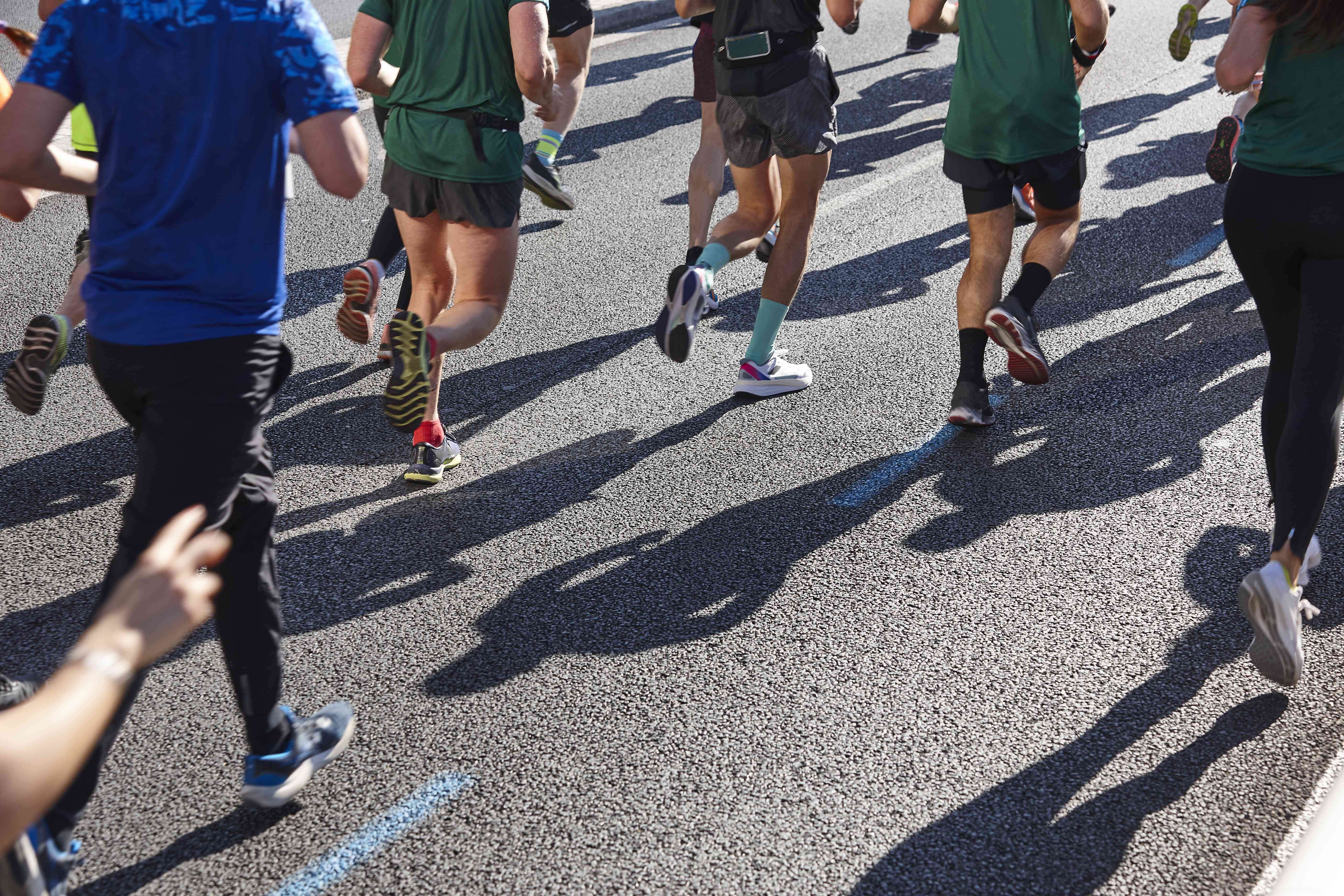How to Train for Marathons and Half Marathons While Safeguarding Your Joints

Running a marathon or half marathon – whether it’s the iconic Chicago Marathon or a local 5K – requires more than just pounding the pavement. True success lies in balancing mileage with smart strength work, proper nutrition, and proactive injury prevention. At MidAmerica Orthopaedics, we believe that thoughtful preparation not only helps you cross the finish line but also keeps your bones and joints healthy for many races to come. Here’s how to craft a training plan that combines endurance building with long-term musculoskeletal care.
1. Establish Your Starting Point
Before hitting high weekly miles, assess where you stand today:
- Endurance Check: How far can you comfortably run?
- Pace Assessment: What’s your average pace over 3–5 miles?
- Injury History: Any recurring aches or joint problems?
Use this information to set realistic goals—whether that’s completing your first half marathon, improving your personal best, or simply running injury-free.
2. Build Variety into Your Routine
A training schedule that focuses exclusively on long runs can leave you vulnerable to overuse injuries. Instead, structure each week with:
- Long Run: Gradually increase by no more than 10% each week.
- Tempo or Interval Session: Improves speed and aerobic capacity.
- Easy Recovery Run: Keeps blood flowing without adding stress. Cross-Training: Activities like swimming, cycling, or elliptical work to engage other muscle groups while giving your joints relief.
- Rest Day: Complete rest or very gentle movement (e.g., walking, restorative yoga).
This blend ensures you develop endurance, speed, and muscular balance—key factors for staying injury-free.
3. Prioritize Strength Training
Strong muscles support and protect your joints, absorbing impact that would otherwise travel to bones and cartilage. Incorporate two weekly sessions focusing on:
-
Lower-Body Strength
- Squats or chair squats
- Lunges (forward and reverse)
- Step-ups on a sturdy platform
-
Core Stability
- Planks (front, side, and reverse)
- Bird-Dogs
- Dead Bugs
-
Hip and Glute Activation
- Glute bridges or hip thrusts
- Clamshells with resistance band
- Fire hydrants
Dedicate 20–30 minutes to these exercises on your non-long-run days. Consistent strength work improves posture, reduces compensatory movement patterns, and enhances push-off power.
4. Fuel Your Body for Performance and Recovery
What you eat influences not only your energy levels but also your joint health and healing capacity.
-
Anti-Inflammatory Foods
- Fatty fish (salmon, mackerel)
- Walnuts, chia seeds, and flaxseeds
- Berries, cherries, and dark leafy greens
-
Bone-Building Nutrients
- Calcium sources: dairy, fortified plant milks, tofu
- Vitamin D: sunlight exposure, fortified cereals, fatty fish
- Magnesium and vitamin K: nuts, seeds, broccoli
-
Hydration & Electrolytes
- Sip water consistently throughout the day
- Add electrolyte beverages during longer runs or in heat
- Include hydrating foods: watermelon, cucumbers, oranges
-
Timing Matters
- Pre-run snack: easily digestible carbs like a banana or energy bar
- Post-run meal: mix of protein (Greek yogurt, lean meat) and carbs (rice, potatoes) within 30–60 minutes
A balanced diet speeds muscle repair, reduces soreness, and fortifies joints against the demands of high-volume training.
5. Warm Up and Cool Down with Purpose
Transitioning in and out of intense effort is vital for joint protection:
-
Dynamic Warm-Up (5–10 minutes)
- Leg swings front-to-back and side-to-side
- High knees or butt kicks
- Arm circles and torso rotations
-
Recovery Cool-Down (5–10 minutes)
- Easy jogging or walking to bring heart rate down
-
Static Stretches held for 30–45 seconds each:
- Hamstring stretch
- Quadriceps stretch
- Calf stretch against a wall
- Hip flexor stretch
- Lower-back twist
These routines increase blood flow, enhance flexibility, and help joints move smoothly during both training and everyday life.
6. Monitor Your Body and Adjust Accordingly
Elite athletes still listen to their bodies—and so should you. Early signs of overuse or joint strain include:
- Persistent soreness that doesn’t improve with rest
- Sharp or shooting pains during movement
- Swelling around joints
- Unusual stiffness upon waking
If you experience these symptoms, reduce your mileage, prioritize rest, or swap runs for low-impact cross-training until discomfort subsides. Persistent issues warrant evaluation by an orthopaedic specialist.
7. Schedule Periodic Check-Ins
Even if you feel great, periodic assessments by a physical therapist or orthopaedic provider can catch imbalances before they become injuries. A professional can help you:
- Refine your running form
- Identify muscular weaknesses or asymmetries
- Update your training plan based on progress
Proactive check-ups are an investment in longevity—allowing you to enjoy many marathon finishes down the road.
Conclusion
Marathon and half marathon training in Chicago’s spring and summer isn’t just about mileage. It’s about building a resilient body. By combining strategic workouts, strength training, balanced nutrition, and attentive recovery, you can protect your bones and joints while chasing your running goals. Remember, the finish line is more rewarding when you arrive there healthy and strong.
Good luck on your training journey, and know that MidAmerica Orthopaedics is here to support every stride—this season and beyond.

